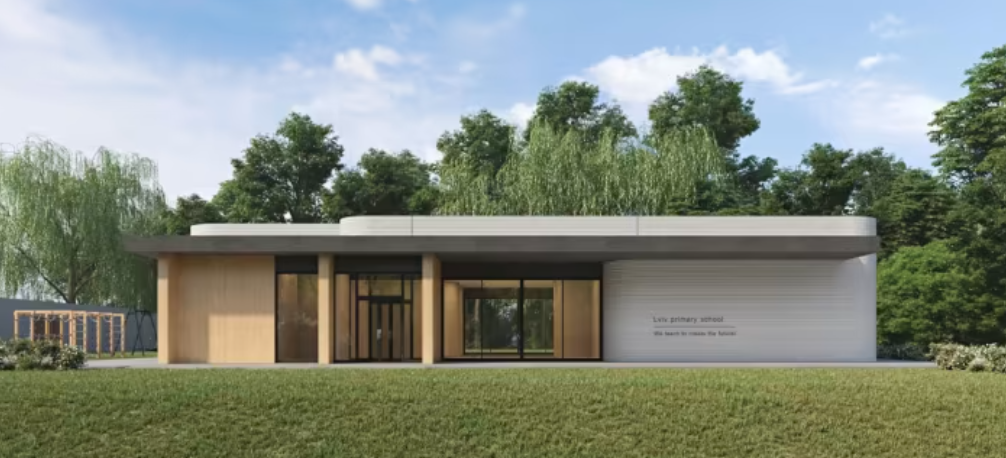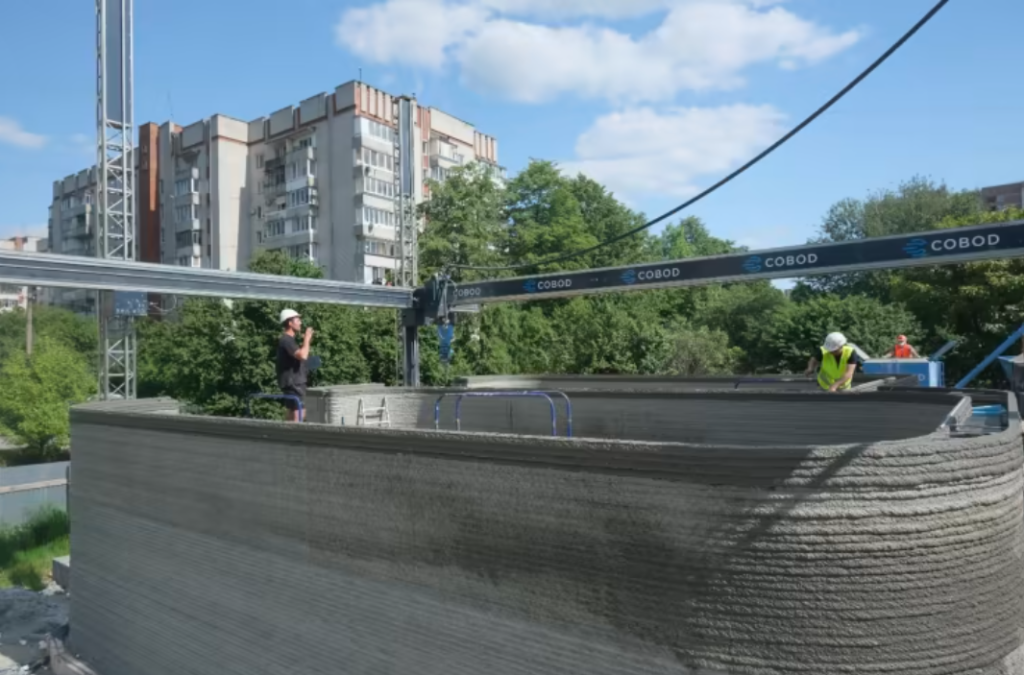Humanitarian foundation Team4UA and Danish 3DCP Group have commenced the construction of the first 3D printed school in Lviv, Ukraine.
The project at hand utilizes COBOD‘s BOD2 3D printer, which is anticipated to be completed by this month. Notably, this initiative represents a “milestone” as it signifies the establishment of Europe’s first 3D printed school.
“We are proud to have delivered the technology that makes this project possible. The proud people of Ukraine deserve all the support we can provide, and I am happy we have been able to donate all what we have been doing in this project for free. Out of the respect for the impressive fighting will Ukraine has shown on behalf of all of the rest of Europe and the rest of the democratic world, this is the least we could do,” said Henrik Lund-Nielsen, Founder & General Manager of COBOD.

3D printed school offers hope for displaced children
A new primary school is currently under construction on the grounds of the existing school number 23. The school building, which consists of a single floor and covers an area of 370 m2, is designed to create a supportive and nurturing environment for young students, says COBOD. This educational facility aims to offer a ray of hope for internally displaced children who have been impacted by the devastating effects of a large-scale war.
To clearly demonstrate that the building has been constructed using 3D printing technology, the architect made the decision to exclude COBOD’s flaps technology. Doing so allows for the creation of very smooth walls. Additionally, 90% of the construction materials has been sourced locally, providing a boost to the economy and empowering the local community. Notably, 99% of the materials used for the 3D printed concrete have been procured locally at a low cost.
“The school construction project based on 3D printing technology is designed to provide access to education for children affected by the full-scale war in Ukraine, as well as to create an inclusive space for internally displaced children in Lviv. Destroyed schools and other educational institutions deprive the younger generation of the opportunity to receive a quality education, which can have a negative impact on their future and the future of the state. Innovative solutions will help to overcome this problem right now, more efficiently and much faster – just see how much have been done here in just 3-4 days of printing. Virtually half of the printing is already complete,” said Jean-Christophe Bonis, Founder and Chairman of the Team4UA humanitarian foundation.
The construction of Europe’s first 3D printed school is seen by COBOD as an example of the resilience and determination of the Ukrainian people. This project marks a significant milestone in the ongoing efforts of reconstruction and serves as a blueprint for utilizing advanced technology to tackle pressing societal issues.

Reaching new heights with 3D printing construction
A two-story 3D printed building was constructed by Siam Cement Group (SCG), a cement and building material company. The building, located in Saraburi, Thailand, holds the distinction of being the “world’s first 3D printed medical center.” SCG employed COBOD’s BOD2 3D printer to create this novel two-story structure. With a generous floor area of 345 m2 spread across its two levels, it stands as the largest 3D printed building among the ASEAN countries.
In Ahmedabad Cantonment, the Indian Army successfully built its first 3D printed dwelling unit. This disaster-resistant structure adheres to Zone-3 earthquake specifications and incorporates green building standards. The army asserts that the construction of the 71-square-meter dwelling unit, complete with garage space, was completed in a span of 12 weeks, owing to the utilization of 3D printed walls, slabs, and foundation. Moreover, this achievement highlights the Indian Army’s commitment to the ‘Atmanirbhar Bharat Abhiyan.’
What does the future of 3D printing for the next ten years hold?
What engineering challenges will need to be tackled in the additive manufacturing sector in the coming decade?
To stay up to date with the latest 3D printing news, don’t forget to subscribe to the 3D Printing Industry newsletter or follow us on Twitter, or like our page on Facebook.
While you’re here, why not subscribe to our Youtube channel? Featuring discussion, debriefs, video shorts, and webinar replays.
Are you looking for a job in the additive manufacturing industry? Visit 3D Printing Jobs for a selection of roles in the industry.
Featured image shows the first 3D printed school in Ukraine. Image via COBOD.



